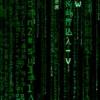Was this malware related?
virus - can only boot in safe mode, antivirus infected [Closed]
#31
![virus - can only boot in safe mode, antivirus infected [Closed]: post #31](https://www.geekstogo.com/forum/public/style_images/shift/icon_share.png)
 Posted 16 January 2015 - 02:44 PM
Posted 16 January 2015 - 02:44 PM

#32
![virus - can only boot in safe mode, antivirus infected [Closed]: post #32](https://www.geekstogo.com/forum/public/style_images/shift/icon_share.png)
 Posted 16 January 2015 - 02:58 PM
Posted 16 January 2015 - 02:58 PM

No it was not. Just good old hardware malfunction.
#33
![virus - can only boot in safe mode, antivirus infected [Closed]: post #33](https://www.geekstogo.com/forum/public/style_images/shift/icon_share.png)
 Posted 16 January 2015 - 06:06 PM
Posted 16 January 2015 - 06:06 PM

While I'm waiting for your reply I thought I would give you a little more information so you can make an appropriate informed decision. When I initially reviewed your logs I saw the following two lines. This basically shows that the machine crashed and then chkdsk was likely automatically run to see if there was any damage. Lost clusters were found at this time and likely fixed. This was on January 3rd.
#34
![virus - can only boot in safe mode, antivirus infected [Closed]: post #34](https://www.geekstogo.com/forum/public/style_images/shift/icon_share.png)
 Posted 16 January 2015 - 09:23 PM
Posted 16 January 2015 - 09:23 PM

Sorry that it's taken me so long to reply. I ran the checkdisk on the 3rd, but I closed out of it because I thought it was frozen. ): I hope that didn't screw anything major up. I do plan on keeping this machine as I really don't have the funds to replace the HDD right now or anytime in the near future. What do you suggest I do?
I tried running the Windows Drive Fitness Test but it looks like nothing is happening.
#35
![virus - can only boot in safe mode, antivirus infected [Closed]: post #35](https://www.geekstogo.com/forum/public/style_images/shift/icon_share.png)
 Posted 17 January 2015 - 08:07 AM
Posted 17 January 2015 - 08:07 AM

No problem. It appears the Windows Drive Fitness Test won't scan the primary hard drive (only secondary and USB connected drives). Sorry about that. You may uninstall this program. We'll use a different tool later.
As mentioned, we can try continuing...just keep in mind what I have mentioned and ensure you have your critical data backed up. If you wish to continue, please do the following.
Step#1 - System File Checker
1. Right-Click your Start Button in the lower left of your computer and select Command Prompt (Admin).
2. Answer Yes when asked to allow.
3. You should now have a black window open that you can type in to.
4. Type sfc /scannow and hit enter to start the scan. Please notice the space between sfc and /scannow.
5. Once the scan finishes please copy and paste the following into the command prompt window and hit enter.
Note: When you go to paste, right-click your mouse in the command-prompt window and select paste.
findstr /c:"[SR]" %windir%\logs\cbs\cbs.log >%userprofile%\Desktop\sfcdetails.txt
7. This will place a new file on your desktop named sfcdetails.txt. Please copy/past the contents of this file into your next post.
#36
![virus - can only boot in safe mode, antivirus infected [Closed]: post #36](https://www.geekstogo.com/forum/public/style_images/shift/icon_share.png)
 Posted 22 January 2015 - 05:44 PM
Posted 22 January 2015 - 05:44 PM

If you need this topic reopened, please contact a staff member. This applies only to the original topic starter. Everyone else please begin a New Topic.
Similar Topics
0 user(s) are reading this topic
0 members, 0 guests, 0 anonymous users
As Featured On:








 This topic is locked
This topic is locked





 Sign In
Sign In Create Account
Create Account

